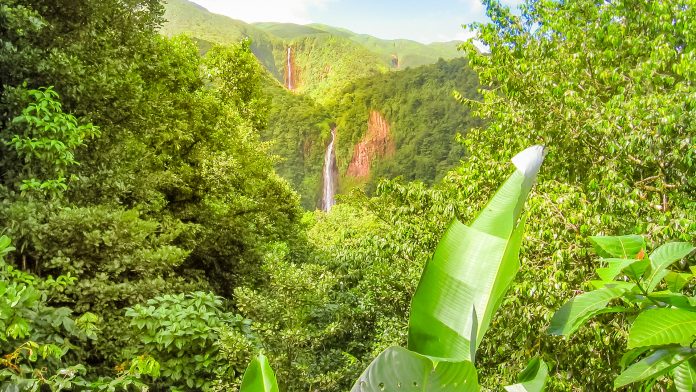Based on the historic ‘forest gardens’ Guadeloupe, researchers have created a concept for a small-scale farming system in order to promote sustainable agricultural production and biodiversity.
Guadeloupe is a region of France in the Caribbean with some of the world’s most biodiverse populations. However, this biodiversity is under significant pressure. To find ways to benefit both biodiversity and agricultural production, an Operational Group was established to study the feasibility of small-scale production systems with a focus on forest agrobiodiversity.
Mathias Apatout, board member of Agricultural Union of Vanilla Farmers of Guadeloupe (SYAPROVAG), explains “Inspired by the historical Guadeloupean ‘forest gardens,’ we felt that the diversification of forest production could be a solution to find alternatives to monocultures which are problematic from both an environmental and economic point of view.”
Previously, households in Guadeloupe would have one agricultural area near the house and another ‘forest garden’ in the mountains. They would grow coffee, cocoa, vanilla, banana, roots and tubers, medicinal plants, fruit trees and flowers. They would also harvest wood, keep bees and breed animals. Having the two areas enabled them to benefit from favourable climate conditions, and the diversification of the activities made it available system and helped to reduce risk.
“Today, the small part of the agricultural sector still operating with a diversified portfolio of crops lacks support tailored to its specificities” says Carla Barlagne, researcher at The James Hutton Institute (one of the Operational Group partners).
Arsène Vinglassalon, the president of SYAPROVAG, says: “We wanted to test and perfect a methodology (scientific, organisational and partnership) for small-scale farming practices in the forest undergrowth that would respect ecological balance.”
Sustainable agrobiodiverse management of forest undergrowth
The Operational Group examined past and current agricultural practices in the forest as well as forest users’ perceptions. The partners carried out 170 field surveys and interviews with farmers, animal breeders, experts and institutional actors and consumers. Several barriers to small-scale agrobiodiverse systems were identified including the absence of technical and economic references and a lack of communication on the products.
In addition, three participatory workshops were conducted in collaboration with the SIMRA project (Horizon 2020) for local stakeholders to share their visions of the challenges and opportunities ahead.
Using the outcomes, as part of a complete methodology for sustainable agrobiodiverse management of forest undergrowth, the partners produced an ecological impact evaluation grid. The grid includes biodiversity indicators and is used to monitor the evolution of a cultivated forest plot, enabling the comparison of two forest plots. Farmers were involved in its development and will be able to use it to assess the ecological potential of a forest plot, it provides guidelines to monitor the impact of human activities on the forest.
Arsène Vinglassalon explains that the VALAB Operational Group aimed to answer a number of issues for the Guadeloupean archipelago: “Economic (viability, creation); environmental (preserving endemic biodiversity as well as water quality and stock for the islands, balancing carbon stocks and sinks); social (providing quality product that meet the local demand maintaining cultural heritage and enhancing agriculture’s contribution to the well-being of the population).”
The VALAB initiative is now moving into its second phase, which will build on the results and carry out an agronomic, environmental, social and economic experimentation of viable small-scale forest farming systems, applying the tools that it developed in the first phase.







